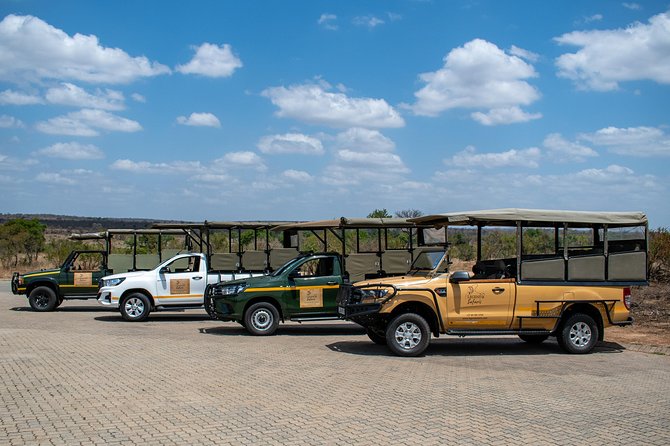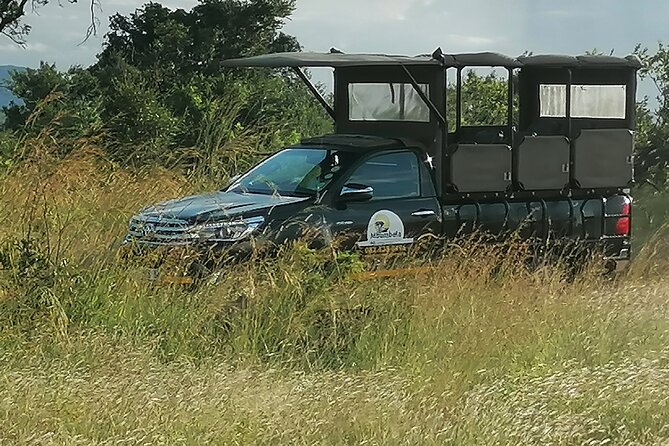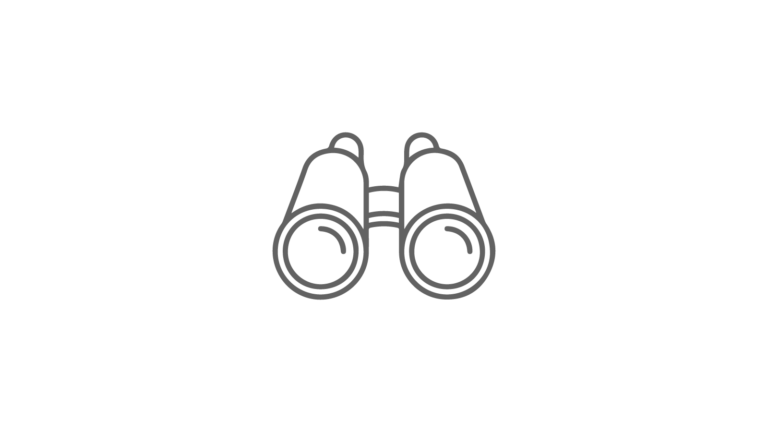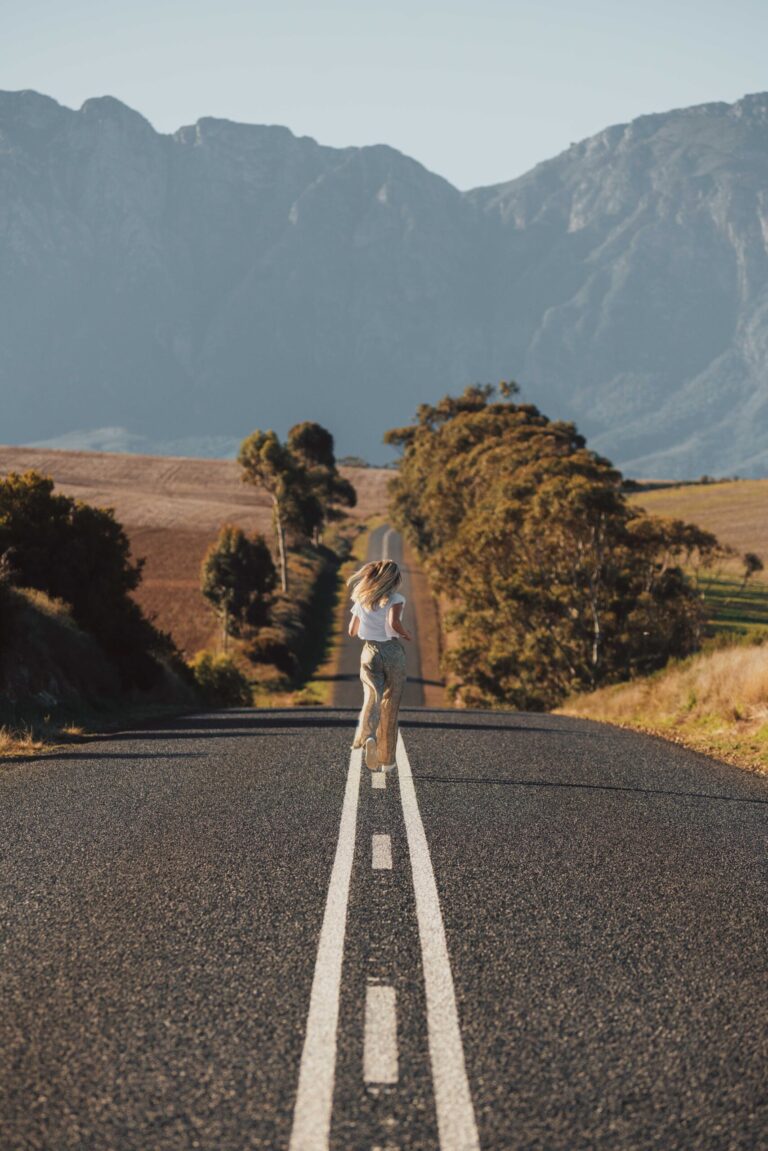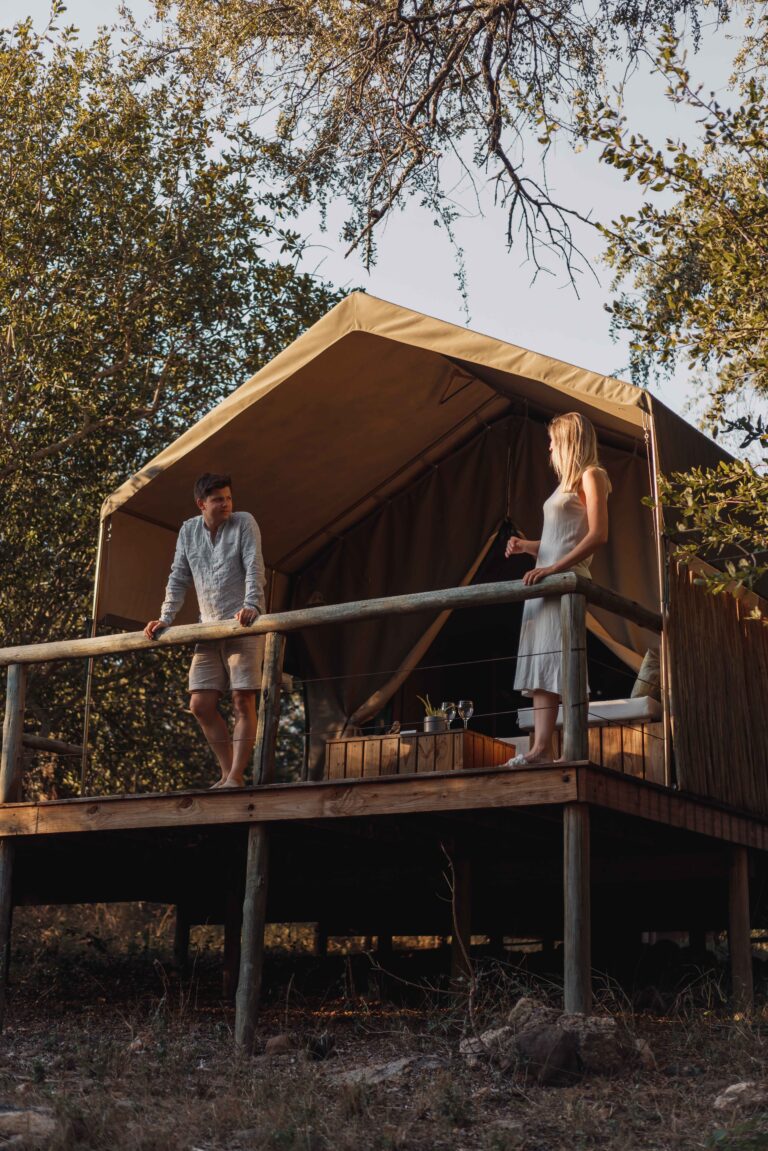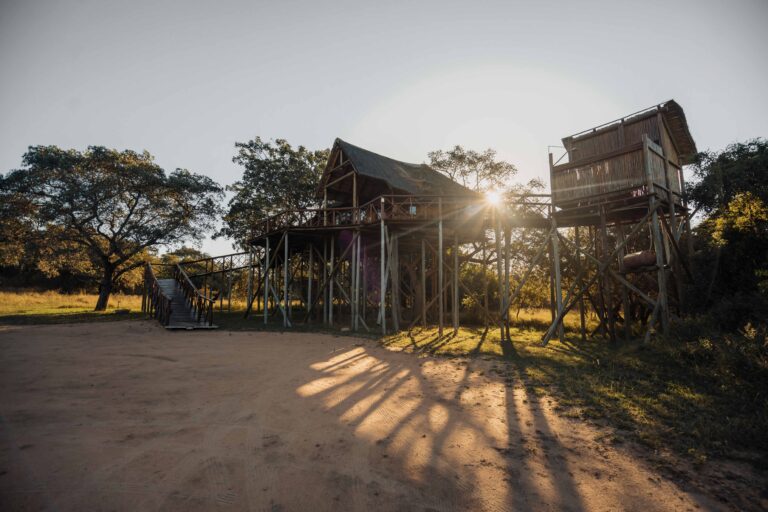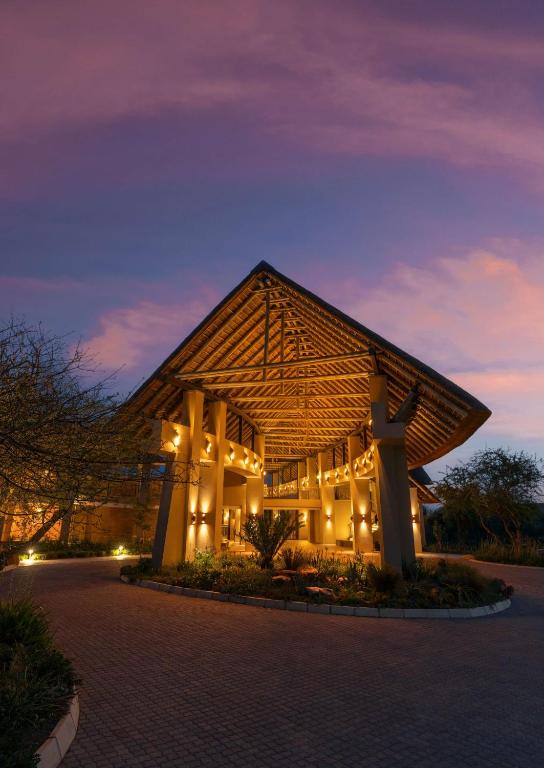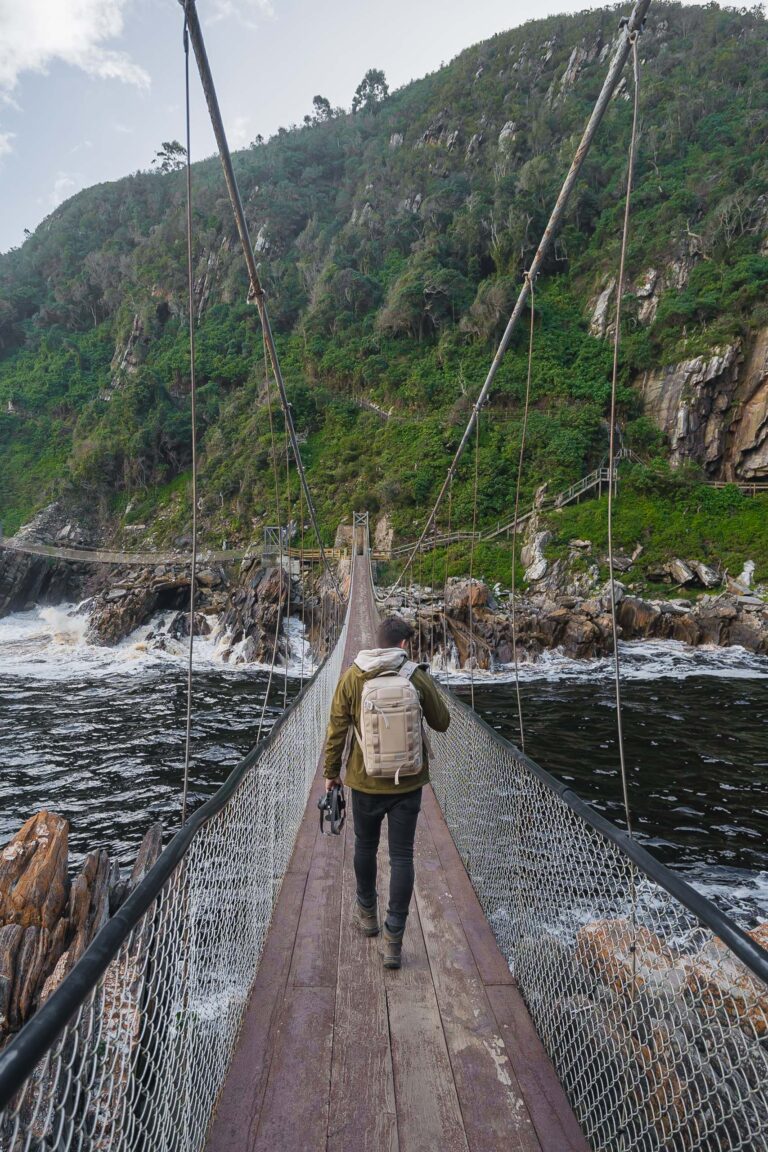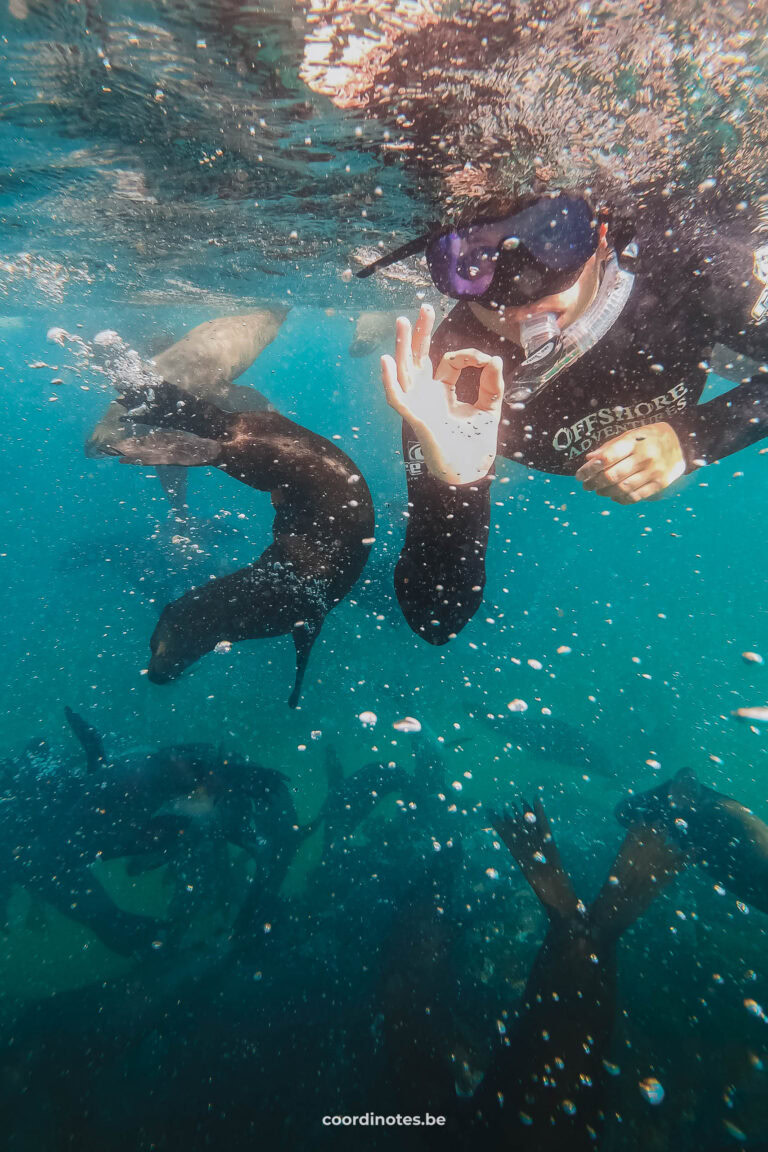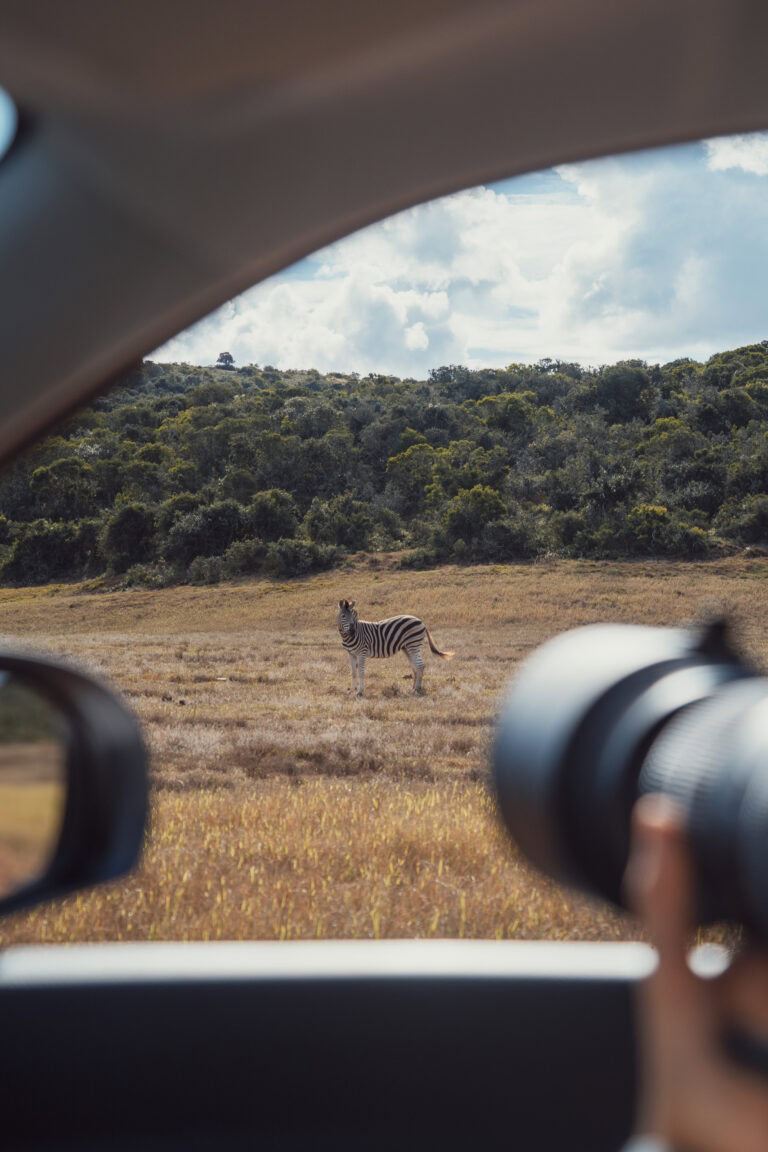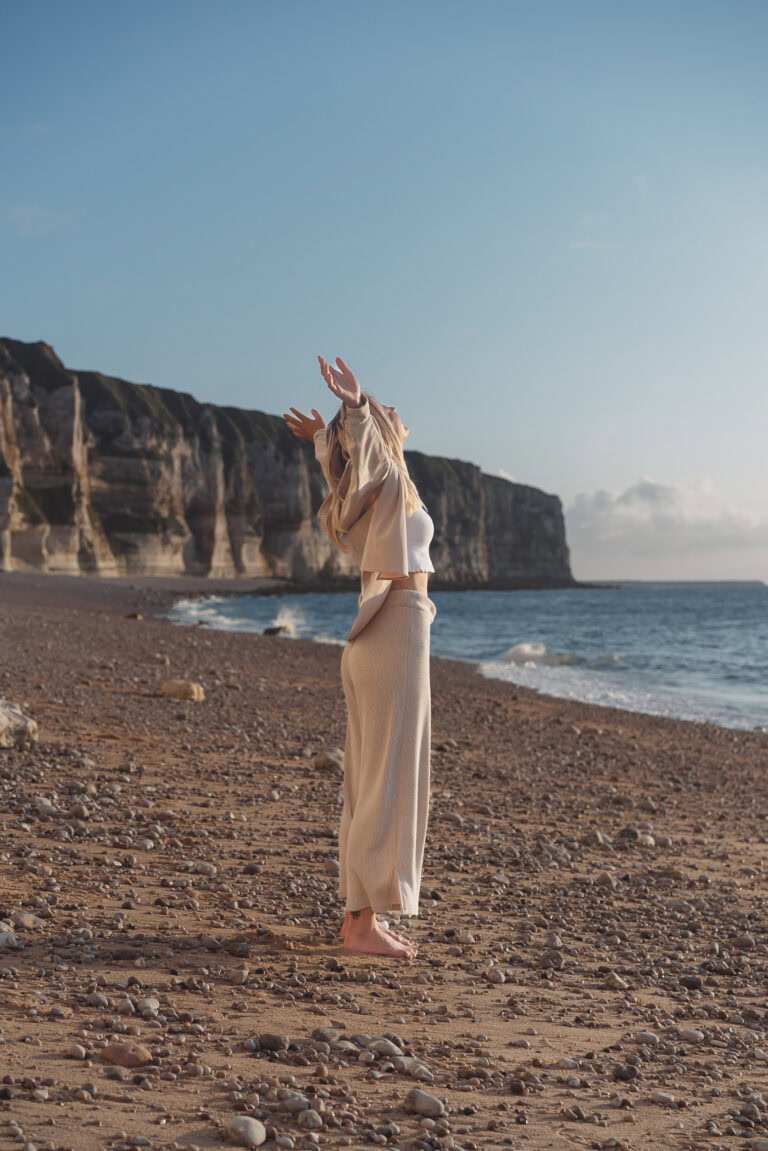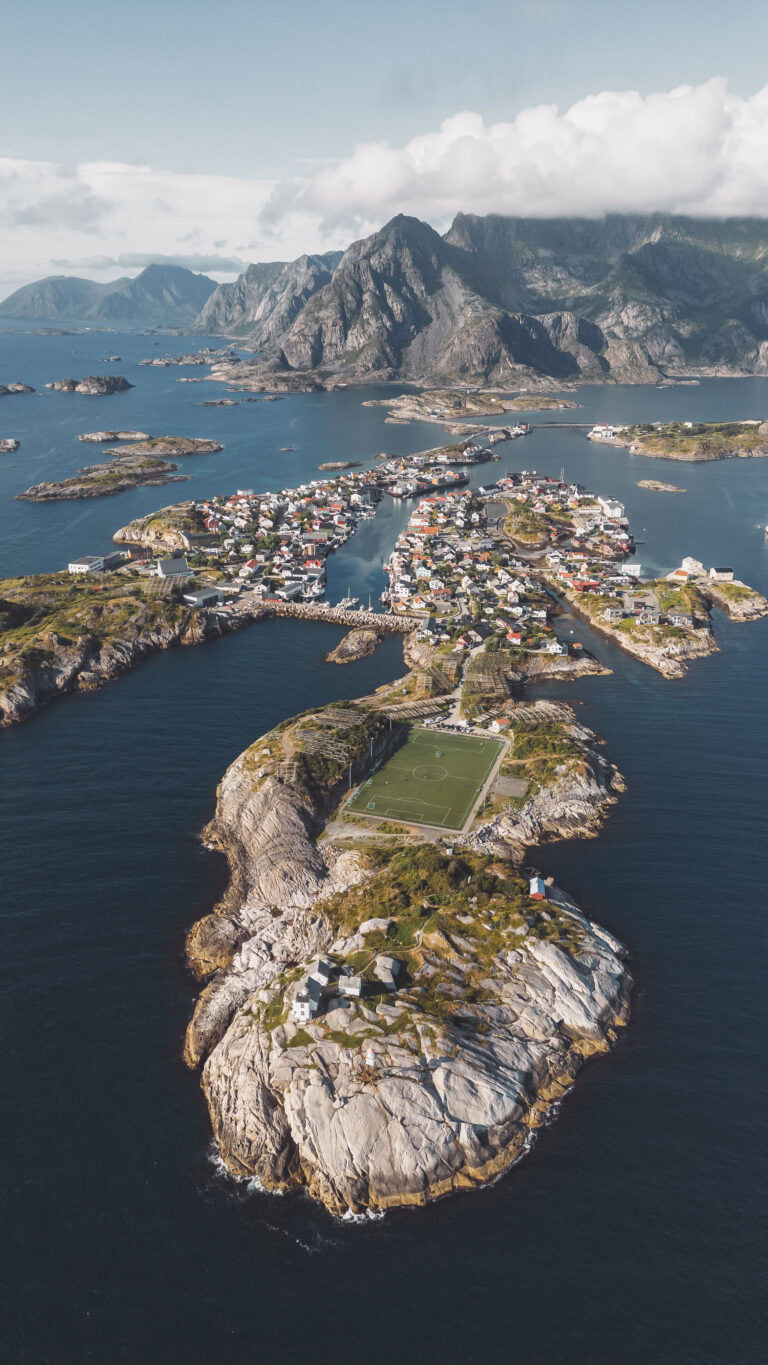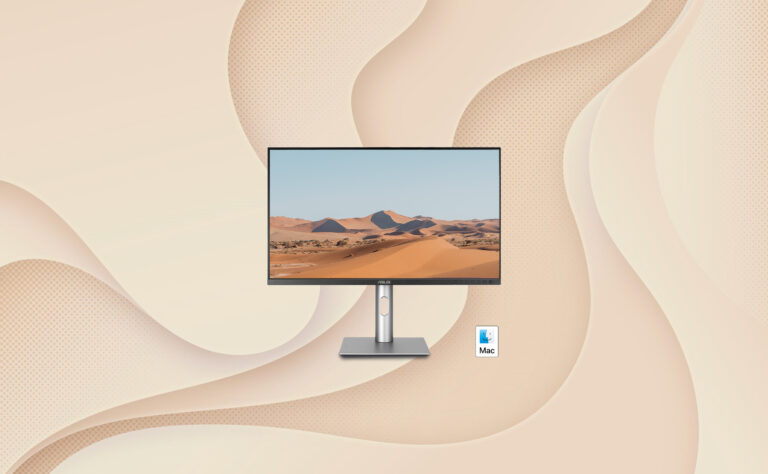Overview
This post may contain affiliate links, which means we may receive a small commission, at no extra cost to you, if you make a purchase through our link.
This is a free way to support us and allows us to continue creating even more inspiring travel guides. Thank you for supporting the love we put into Coordinotes!
About Kruger National Park
Kruger National Park is one of the most famous and iconic wildlife reserves in Africa and even in the world. It is located in northeastern South Africa and is, with its 20.000 square kilometers, one of the largest game reserves on the African continent. It is about 360 kilometers long and extends from the Limpopo River in the north to the Crocodile River in the south.
The park was established in 1898 and was named after Paul Kruger, the former President of the South African Republic. From its inception to this day, the park has always played an important role in wildlife conservation. More recently, the park became part of the Great Limpopo Transfrontier Park, a conservation area that connects parks in South Africa, Mozambique, and Zimbabwe. It is involved in various conservation efforts to protect endangered species, combat poaching, and preserve natural ecosystems.
Kruger National Park is known for its incredible wildlife and biodiversity. It is home to a big variety of wildlife, including the ‘Big Five’, but also many other mammals, birds, reptiles, and plant species.
Besides the variety of animals living in Kruger, the park also has a very varied landscape from dense, riverine forests to open savannas and grasslands. There are also rugged mountains and seasonal rivers. This variety of landscapes ensures that all these different species of animals can live here.
Practical
R460 per adult per day
R230 per child per day
Opening hours depend on the season or month of your visit.
Find all current opening hours on the official website of Kruger National Park.
Make sure you get out of the park on time, or if you sleep in the park, that you get to your camp on time. Otherwise you risk a very high fine.
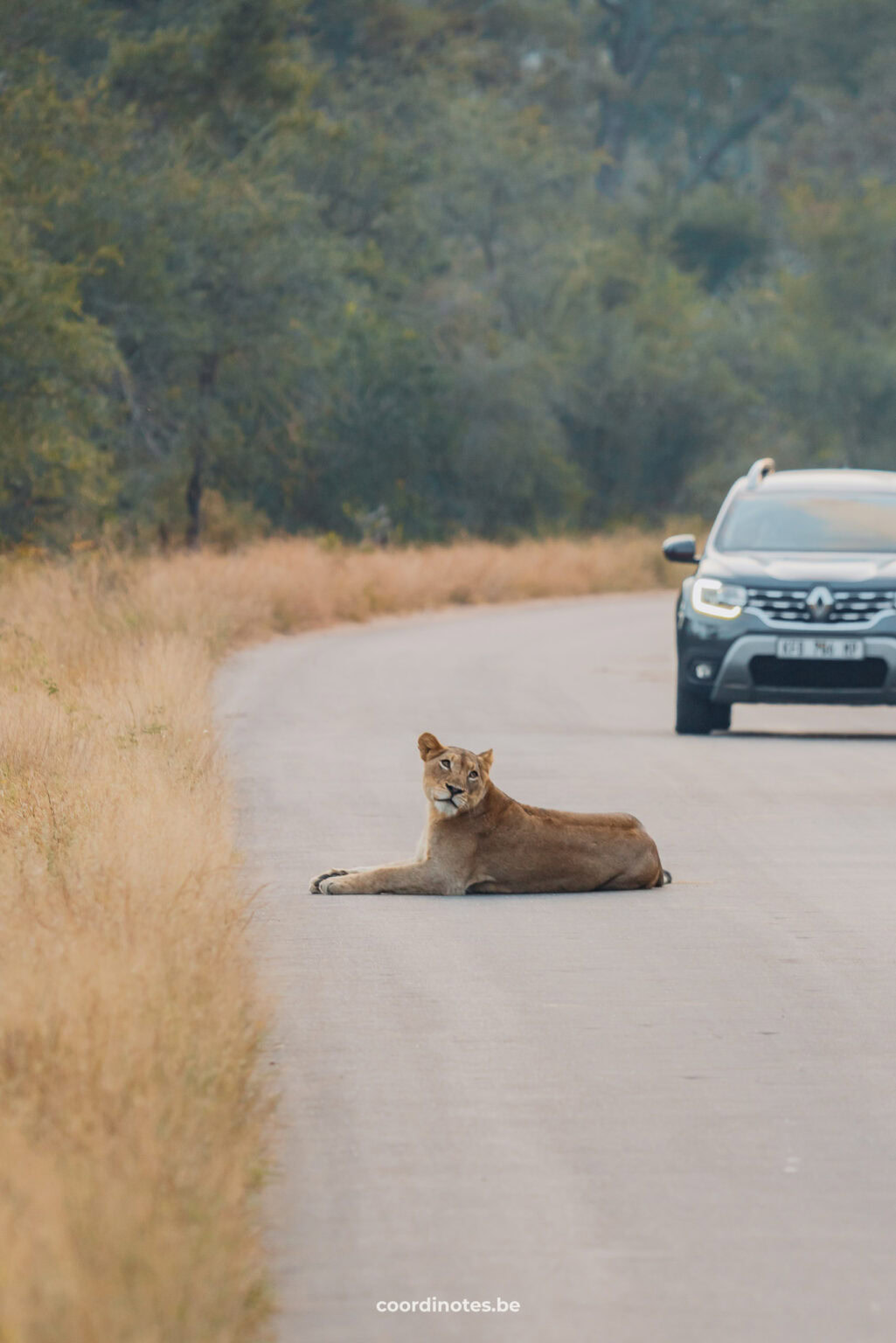
No time to read now?
Save this post on Pinterest!
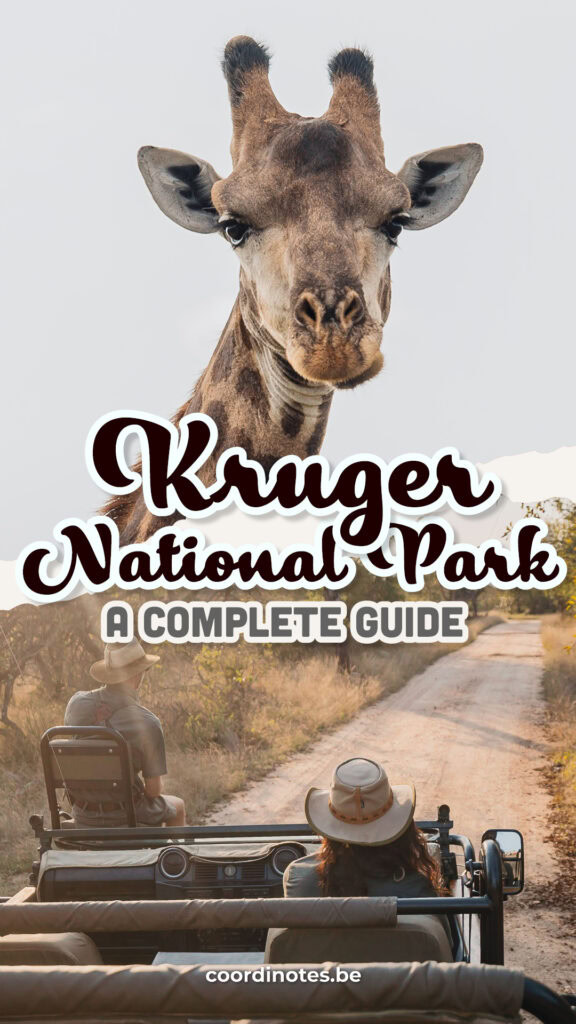
Advertising
Animals in Kruger National Park
The Kruger Park is known for its wide variety of animal species. There are more than 148 species of mammals, 505 species of birds, 118 species of reptiles, 53 species of fish, and 35 amphibians. The Kruger Park is therefore home to the largest variety of animals on the entire continent of Africa.
The best-known animals are the famous ‘Big Five’: the lion, the buffalo, the leopard, the rhino, and the elephant. With over 13.000 elephants, Kruger National Park houses the biggest African elephant population in the world.
Besides the big five, there are also many other animals, such as giraffes, hippos, kudus, impalas, wild dogs, zebras, cheetahs, hyenas, crocodiles, baboons, and rare bird species.
So as you can see: you must be very unlucky if you don’t see one animal during your visit to Kruger National Park!

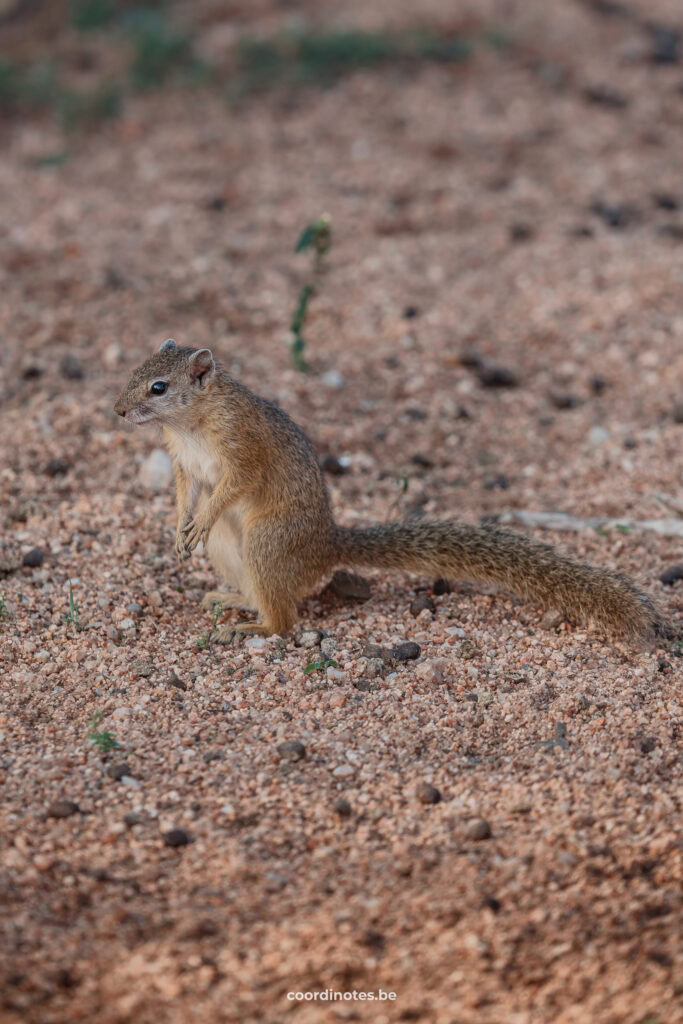
Safari
Increase your chances of spotting the big five by booking a safari through our partner!
Kruger National Park and Greater Kruger
Kruger National Park consists of two parts. The biggest part of Kruger is owned by the government organization SANparks and is referred to as Kruger Park. Several other parts are privately owned, which are all together referred to as Greater Kruger. We decided to visit both parts of the park. Both have pros and cons, so we’ll tell you a bit more about the differences. If you have the time, we advise you to visit both as well.
Most of the information in the rest of this blogpost is about the main Kruger Park. Information about the Greater Kruger Park (the private reserves) will be given to you when you book an accommodation in one of the private game lodges.
Kruger Park
Kruger Park is accessible to all visitors, even for visitors who do not stay the night. Therefore, this is also the more crowded part. Inside the park, you find different rest camps, where you can stay the night. Accommodations here are owned by the government and are more basic. This also means that it is less expensive and more budget-friendly. You can explore this part of the park on a self-drive or during a guided jeep safari. It is not allowed to drive off-road.
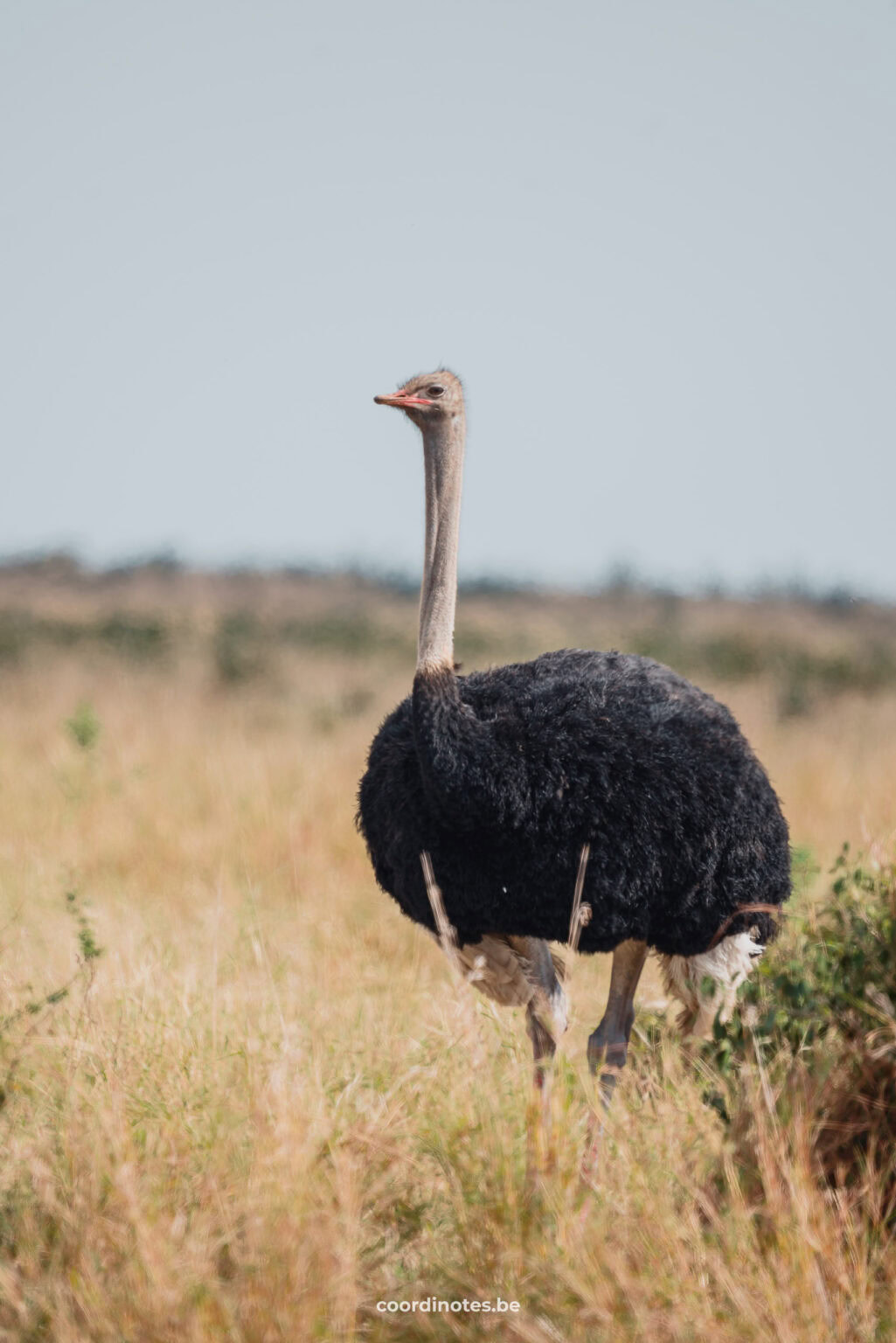
Greater Kruger Park
Greater Kruger Park is a privately owned game reserve. These private game reserves are located on privately owned land and often have fenced boundaries. In a private game reserve, all drives are guided and you find the same animals as you’d see in Kruger. There are of course animals in these private reserves, but as the surface is smaller, you have a higher chance of seeing animals. Rangers will also look for tracks during a game drive so that you are almost certain to see animals. They can also drive off-road here, which is not allowed in Kruger Park
Greater Kruger is only accessible if you stay in a lodge in one of the private game reserves. This also means that it is way less busy than Kruger Park. Accommodations here are more expensive but also offer more luxury.
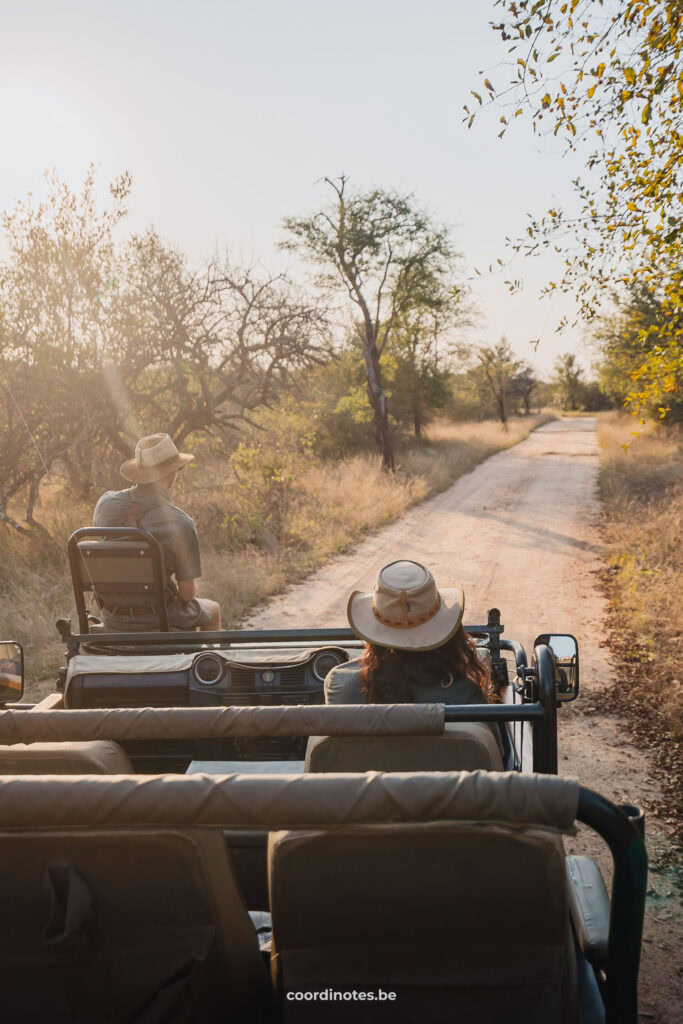

Must Read
Entrance Gates, Areas and Routes
Kruger Park Entrance Gates
There are 9 entrance gates giving access to the Main Kruger Park from South Africa.
Southern zone
- Crocodile Bridge Gate
- Malelane Gate
- Numbi Gate
- Phabeni Gate
- Paul Kruger Gate
Centrale zone
- Orpen Gate
- Phalaborwa Gate
Northern zone
- Punda Maria Gate
- Pafuri Gate
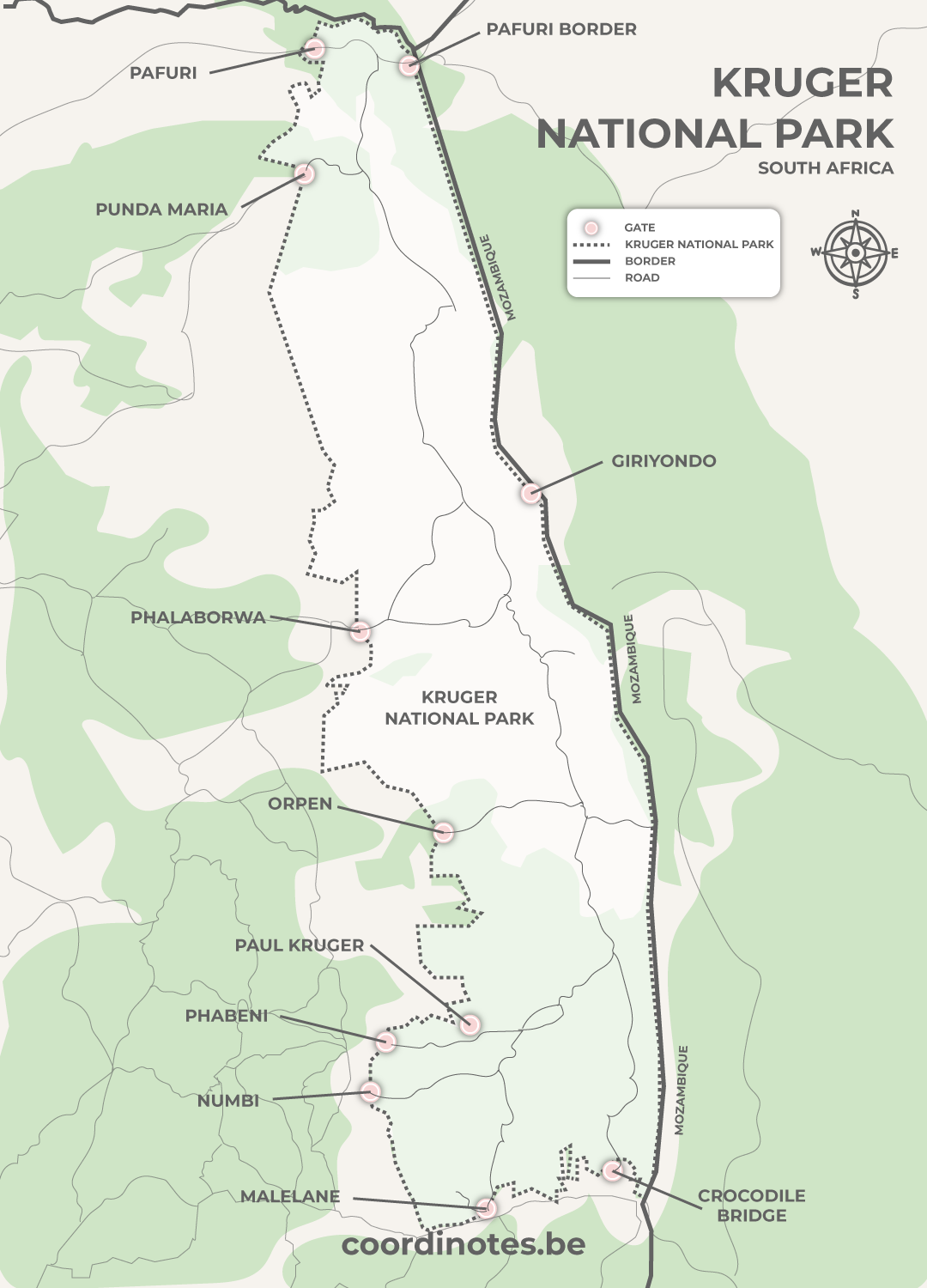
Areas
Main Kruger Park is so big that it is divided into different areas. Because of the variety in landscapes and vegetation, some species are predominant in certain areas. Of course, all these areas are connected to each other and the animals can roam freely around the whole park, so sightings of a specific animal in a certain area are never guaranteed.
You can find out more about which species are predominant in which area here.

Routes
Kruger Park has around 1863 kilometers of roads to drive around the park and you may not drive faster than 50 km/h. The distance from Pafuri Gate to Malelane Gate is almost 400 km, which is an 8-hour non-stop drive.
We recommend you plan your route in advance and allow plenty of time. You will stop regularly to view the animals and if there is a herd of elephants on the road, you have to wait patiently until it moves on.
To make it more easy for you to plan a route, Kruger National Park has listed some premade routes for you! You can find all the different routes here.
Note: In the rest camps you will usually find a board on which people can indicate which animals they have spotted where that day (except for rhinos to prevent poaching). It is always fun to take a look at these boards and possibly adjust your route a bit. Keep in mind that the animals can move very quickly, but sometimes you are lucky and they are still in the same place!
Hotels
Experience an unforgettable night in or around the Kruger Park and hear the animals living at night.
Kruger Park
Kruger Park
Kruger Park
via Booking.com
How many days in Kruger
We spent two days and one night in the main Kruger Park and two days and three nights in private lodges. This way, we had two self-drive days in Kruger Park and two days with guided game drives. We found this a perfect combination of both worlds and plenty of time to explore the gigantic area of the national park. We advise you to have 2-4 days in your planning for Kruger National Park. Don’t expect to see the entire park in this amount of time, because it is simply too big for that. But with 2 to 4 days, there is a good chance that you will have seen each type of the most famous animals at least once. You will probably also be tired after these days because of constantly paying attention and searching for animals.

Advertising
Best time to visit Kruger National Park
The best time to visit Kruger National Park is the dry season from May to October for the best game viewing and walking safari conditions. During these months, there’s less vegetation and animals gather around water sources, making it easier to spot and track them. The cooler weather makes the animals also more active during the day. The shoulder months of April, May, September, and October are just before or after the peak tourist season, and offer a balance between wildlife viewing and pleasant weather. The park is less crowded and accommodations may be cheaper than during the peak tourist season in July and August.
The wet summer months, from October to April, are great for bird watching as migratory birds are present, and the landscape is lush and green.
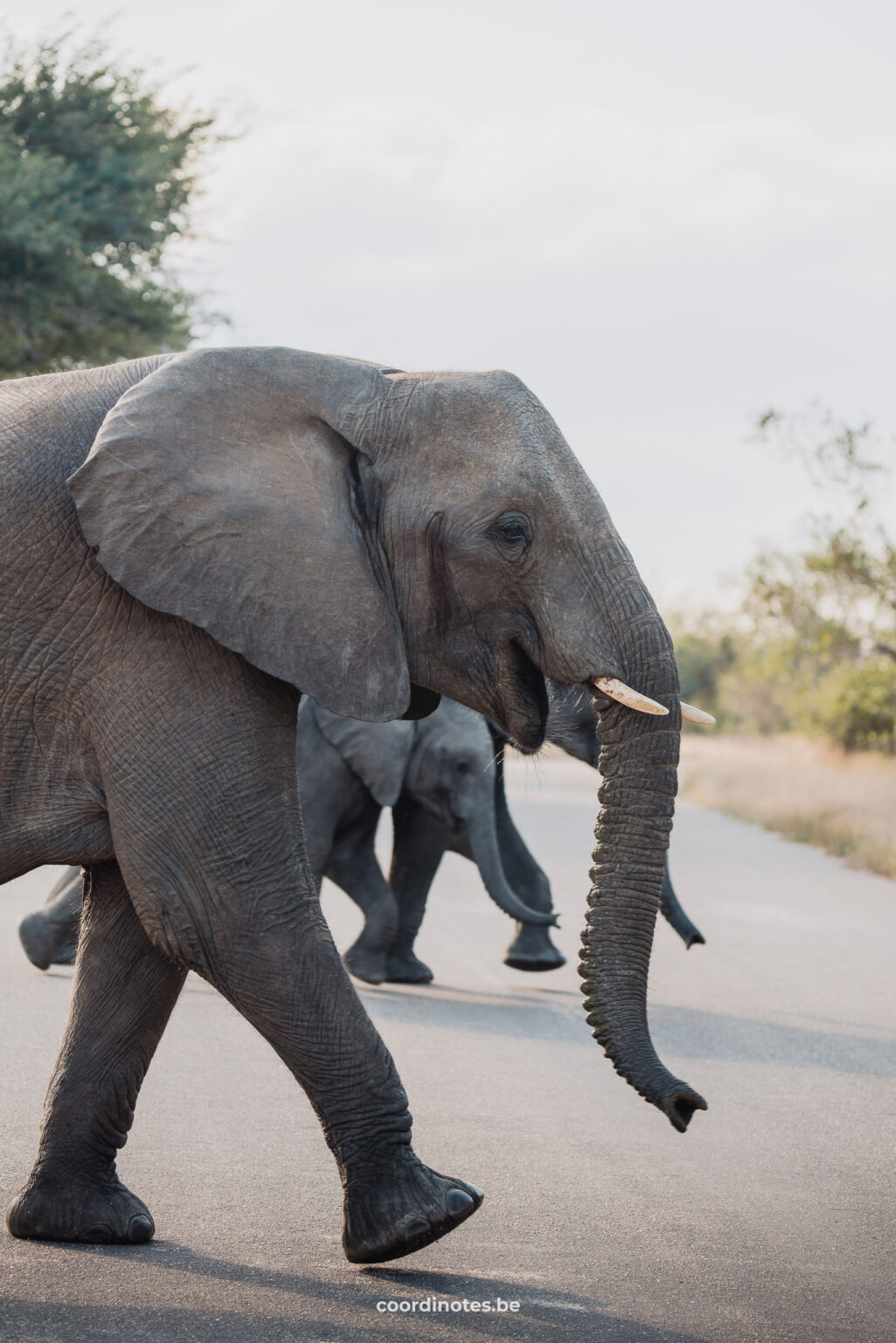
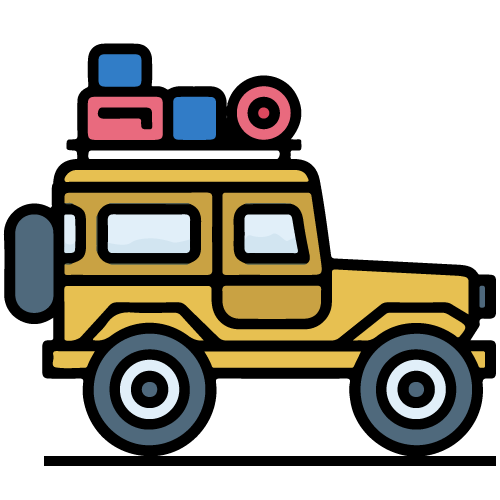
Book your transport in South Africa now!
Safari in Kruger National Park
There are three different ways to explore the Kruger National Park: a guided game drive, self-drive, or a guided bush walk. So what’s the best way to explore the park? Well, that depends on your preferences.
During a guided game drive, a guide will drive you around in a high safari jeep. The advantage is that you don’t have to pay attention to the road so that you can fully focus on spotting animals. You are also sitting a little higher, making it easier to see animals in more dense vegetation and see over other vehicles. During this safari, your guide can tell you more about the animals and they communicate with each other about recent sightings. Guided game drives in Kruger Park can be booked on the SANparks website. In Greater Kruger, game drives can be booked at the private game lodge you are staying.
When you go for a self-drive, you can decide for yourself where you want to drive and how long you want to spend watching an animal. It is also a cheaper option compared to a guided game drive.
The third and maybe most adventurous option is a Bush Walk where you walk through the Kruger Park with an armed guide (and his gun). It is possible that you encounter lions, leopards, or other dangerous animals, but your guide knows exactly what to do during these unique encounters. These bush walks can also be booked on the SANparks website or at private lodges.
We chose to do guided game drives in Greater Kruger at the private lodges and to do a self-drive in Kruger Park. We found this the perfect combination of both, for the experience and for our wallet.
Tip: If you choose to self-drive, we advise you to start as early as possible. Arriving at the park when it opens allows you to explore the park before it gets more crowded and the animals have not yet been disturbed by other visitors.
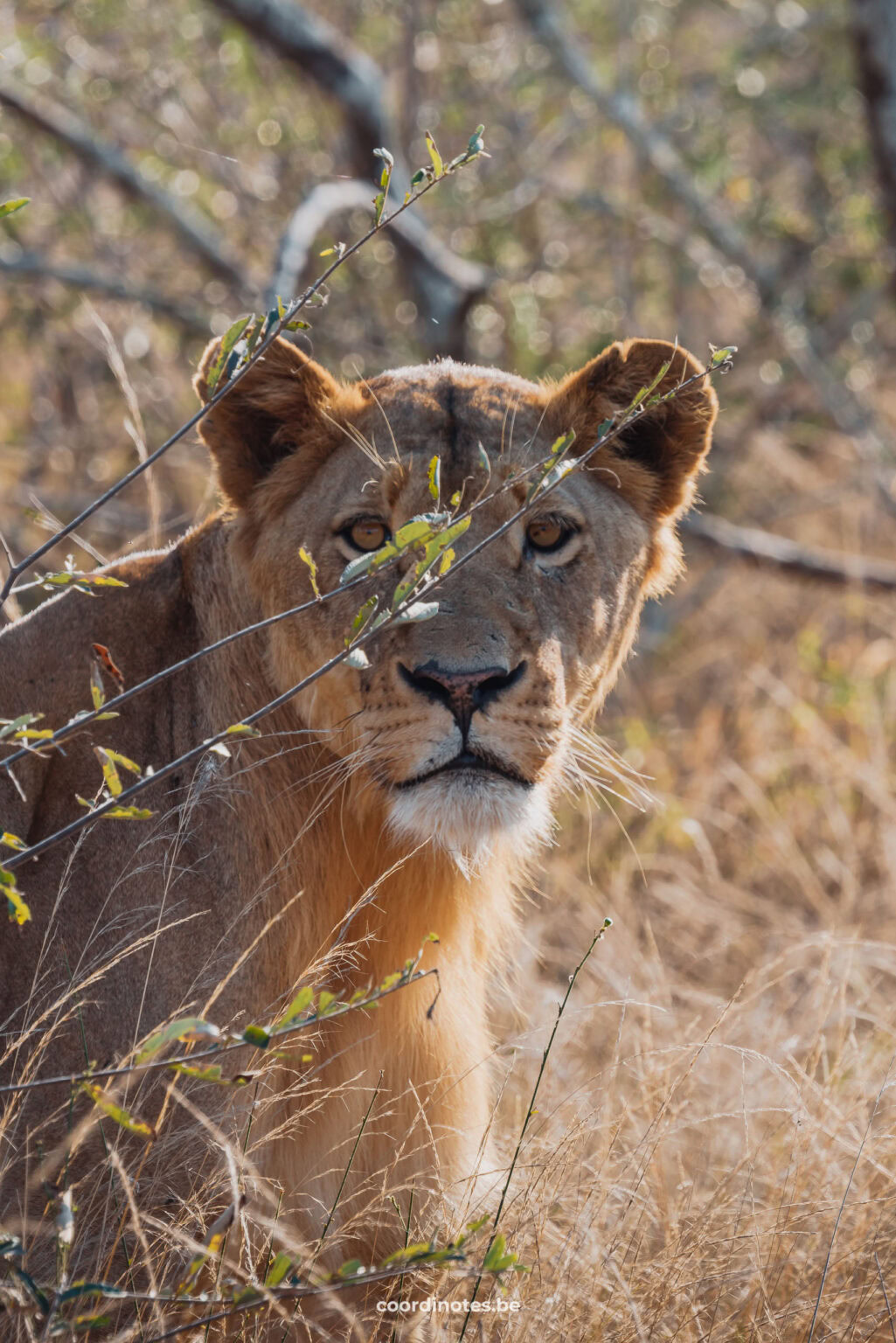
Safari
Increase your chances of spotting the big five by booking a safari through our partner!
Accommodation at Kruger
Rest camps in Kruger National Park
Depending on which part of the park you want to visit, you have different options to stay in and around Kruger Park. You can sleep in one of the rest camps in the Kruger Park, in a lodge in one of the private game reserves of Greater Kruger or you can stay in a hotel near the entrance gates of Kruger National Park.
All rest camps are run by the government and are managed by SAN Parks (South African National Parks). You can book an overnight stay in Kruger Park on the SANParks website. There is a wide variety of accommodation at the rest camps for every budget. We found staying in Kruger quite affordable. On top of that, when you stay inside Kruger, you also have the advantage of getting access to the park an hour earlier. This gives you the opportunity to go on safari in the morning without the big crowds. You can also opt for guided game drives outside the park gate times.
Which camp is best for you to stay in depends on what type of accommodation you prefer and which area you want to explore. Some of the main camps have shops for groceries and souvenirs, ATMs, swimming pools, fuel stations, and restaurants.
Lodges in Kruger National Park
If you prefer to stay in Greater Kruger, you can choose from a huge number of beautiful private game lodges. Two lodges that we can highly recommend are the unique treehouses of Pezulu Tree House Lodge and the glamping lodge of Rukiya Safari Camp.
Accommodation close to Kruger National Park
If you prefer to stay in a lodge The third option is to stay in a hotel or lodge right close to Kruger National Park. These are often located near the gates or within a 20-30 minute drive. These kinds of hotels and lodges are often more affordable and still offer a wonderful experience.
Hotels
Experience an unforgettable night in or around the Kruger Park and hear the animals living at night.
Kruger Park
Kruger Park
Kruger Park
via Booking.com
Extra tips for visiting Kruger National Park
Binoculars are a must
Not all animals in Kruger National Park are right next to the road. That's why binoculars are a must. This also allows you to always keep a safe distance and view animals in more detail.
Start Early
Kruger National Park is big.... no sorry, it is huuuuge! Arriving at the park when it opens, allows you to explore the park before it becomes more crowded, animals are not yet disturbed and you have plenty of time to explore a whole area of the park.
Stick to de speed limit
The speed limit in Kruger National Park on paved roads is 50km/hr. Please, stick to this speed limit. Not only to protect the animals but also so that you can spot animals much more easily. It is no joke that there are speed control checks in the Kruger National Park. Take your time to discover this beautiful place and avoid fines
Known the gate times and plan properly
Familiarise yourself with the gates' opening times and plan your route accordingly when visiting Kruger National Park. Take the speed limit into account, allow extra time for remarkable animal sightings, and make sure you always keep an eye on the time. You risk a very high fine if you are not at the gate before closing time.
Keep a safe distance from wildlife
Wild animals can behave and react very unpredictably. Always keep a safe distance between you and the wildlife to avoid potentially dangerous situations. Also, refrain from hanging out your window!
Never leave your car!
Never, ever, ever leave your car in the park, except in places where it is clearly indicated that it is allowed. This is not only for your own safety but also for the safety of the animals.
Bring Water and Snacks
Bring enough food and drinks for on the road. It might take a while before you come across a rest camp. It is therefore always useful to have something to eat or drink for the little hunger or thirst. There are also picnic areas where you can enjoy a little snack in beautiful surroundings. Always be aware of your surroundings, because animals can also come here.
Provide a map
In Kruger Park, you will find a number of public rest camps with a large fence around them. Here you find toilets, some shops with snacks and drinks and the main rest camps also have a restaurant and a petrol station. It is always useful to have a map, either a physical map or on your phone so that you can plan food, fuel, or toilet stops during your safari.
Fuel up before entering the park
There are a few petrol stations in the park but we advise you to fuel up before you enter the gate. This way you don't have to worry about an empty gas tank during your safari.
Bring your passport
Normally you should always have your passport with you anyway, but we would like to explicitly point this out. To enter the park, you must show your passport. This is mainly to prevent poachers. This way you avoid having to turn back at the gate and losing time to get your passport.
Malaria in Kruger National Park
Kruger National Park is located in the Malaria area. It is advisable to take malaria tablets for any length of trip. Try to avoid bites and bring lots of bug spray! Most lodges and hotels also provide mosquito nets.
Win-Win for everyone
Did you know that, if you buy or book something through our links, we receive a small commission?
However, you still pay the same and therefore have no extra costs! So a win-win for everyone. This way, we can continue to add even more travel inspiration and tips to this blog for your next adventure. Thanks a lot!
Thank you for visiting our blog
We hope you find our free travel guides and tips useful. If you want, you can support us virtually by ‘buying us a coffee‘.
Every contribution, no matter how small, is greatly appreciated and will help us continue to share our passion with you and grow this blog.
Win-Win for everyone
Did you know that, if you buy or book something through our links, we receive a small commission?
However, you still pay the same and therefore have no extra costs! So a win-win for everyone. This way, we can continue to add even more travel inspiration and tips to this blog for your next adventure. Thanks a lot!


